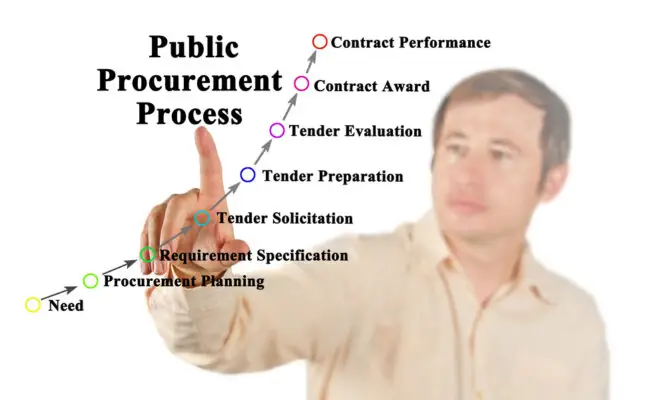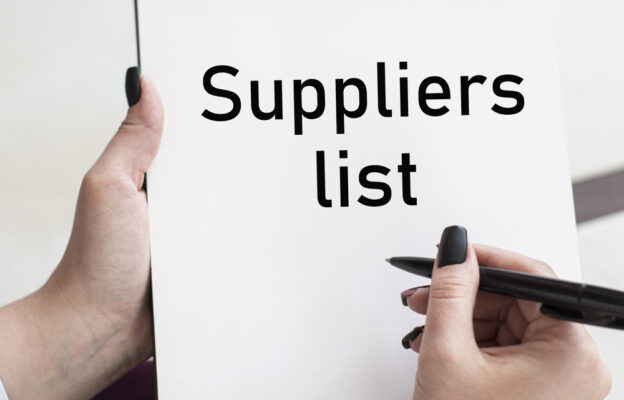Selecting the right supplier is one of the most crucial decisions for any business. A reliable supplier can ensure the quality of goods and services, timely delivery, and competitive pricing, all of which can impact the bottom line.
It involves choosing the best suppliers to provide the goods or services needed for a business. The process can be broken down into four main stages:
Supplier Identification: This is the initial stage where potential suppliers are identified. This can be done through various methods such as market research, trade shows, online searches, or referrals. The aim is to create a list of potential suppliers to meet the business’s needs.
Supplier Evaluation: Once potential suppliers have been identified, the next step is to evaluate them. This involves assessing each supplier’s ability to meet the business’s quality, price, delivery time, capacity, and reliability requirements.
This can involve reviewing the supplier’s financial stability, reputation, track record, and technical capabilities. Tools such as a Supplier Scorecard can be used to rate suppliers on various criteria.
Supplier Selection: After evaluating the potential suppliers, the business selects the supplier or suppliers that best meet its needs. This decision should be based on the evaluation criteria and the business’s strategic goals.
The selected supplier should provide the best value for money and align with the business’s values and long-term objectives.
Supplier Performance Monitoring: After selecting suppliers, their performance should be continuously monitored to meet the business’s expectations. This can involve regular reviews of the supplier’s performance, feedback sessions, and renegotiation of contracts if necessary.
If a supplier’s unsatisfactory performance, the business may need to re-evaluate and select a new supplier.
These four stages form a cycle that should be repeated regularly to ensure that the business’s suppliers meet its needs and contribute to its success.
However, choosing the wrong supplier can result in product defects, delays, and increased costs, harming the company’s reputation and profitability. Therefore, it is essential to have a well-defined process for selecting suppliers.
In this article, we will discuss the four stages of supplier selection, including:
- Identifying potential suppliers.
- Evaluating Criteria for supplier selection.
- Selecting the best supplier for your business needs.
- Negotiating contract terms with your chosen supplier.
- Monitoring supplier performance for long-term success.
The first stage of supplier selection is identifying potential suppliers. This stage involves researching and gathering information about potential suppliers who can meet your business needs.
This could include searching online directories, attending trade shows, asking for recommendations from industry peers, or conducting market research.
Once you have a list of potential suppliers, the next step is to evaluate the supplier’s capabilities and suitability for your business. This involves assessing the supplier’s experience, quality standards, delivery times, pricing, and financial stability.

Identifying Potential Suppliers
The initial stage of supplier selection involves identifying potential suppliers through a systematic and comprehensive search process. To accomplish this, companies can use different methods, such as supplier outreach and market research.
Supplier outreach refers to contacting potential suppliers and asking them to submit a proposal or bid for a particular project or service. This method is especially useful when the company seeks a specific supplier or service.
On the other hand, market research involves collecting information on potential suppliers through industry reports, online directories, trade shows, and other sources.
When identifying potential suppliers, companies should consider factors such as industry reputation, financial stability, reliability, and quality of products or services. A supplier’s industry reputation is important because it reflects the supplier’s credibility and standing within the market.
Financial stability is also critical because it indicates whether or not the supplier has the necessary resources to meet the company’s demands.
Reliability is another crucial factor as it refers to a supplier’s ability to deliver products or services on time and according to the agreed-upon specifications.
Finally, quality is essential because it directly impacts the end product or service that the company delivers to its customers. The first stage of supplier selection is critical as it sets the foundation for the entire process.
Identifying potential suppliers requires a systematic and comprehensive search process that considers factors such as industry reputation, financial stability, reliability, and quality of products or services.
Companies can use different methods, such as supplier outreach and market research, to identify potential suppliers that meet their specific needs and requirements.
Evaluating Criteria for Supplier Selection
Assessing various predetermined criteria is a crucial step in evaluating potential suppliers. One of the primary factors to consider is the cost versus quality tradeoff. While cost is a critical factor in supplier selection, quality should not be overlooked.
A cheaper supplier may save money in the short term, but if their products or services are of subpar quality, it could result in long-term costs and damage the company’s reputation.
Another crucial factor in evaluating criteria for supplier selection is risk assessment. It is essential to analyze the potential risks associated with each supplier before deciding.
This includes examining their financial stability, legal history, and potential ethical concerns. A supplier with a high risk of failure or legal issues could disrupt the company’s operations, result in financial losses, and tarnish the company’s reputation.
Evaluating criteria for supplier selection is a vital process that requires a precise and analytical approach. Cost versus quality tradeoff and risk assessment are two essential factors to consider when evaluating potential suppliers.
Selecting the Best Supplier for Your Business Needs
When choosing a supplier for your business, it is crucial to consider various factors beyond just cost and quality. Supplier selection strategies should involve an in-depth evaluation of potential suppliers’ ability to meet your needs and provide reliable and timely delivery.
The process of selecting the right supplier can be broken down into four stages, each with its own considerations and challenges.
The first stage of supplier selection involves identifying potential suppliers. This can be accomplished through various methods, including online research, referrals, and trade shows.
Once potential suppliers have been identified, the second stage involves evaluating them based on predetermined criteria. This can include quality, delivery times, pricing, and customer service. The third stage involves selecting the best supplier based on the evaluation results.
This may involve negotiating terms and conditions and establishing a supplier relationship management plan. The final stage involves monitoring and ongoing evaluation of the supplier’s performance to ensure that they continue to meet your business needs.
Selecting the best supplier for your business requires careful consideration and a well-defined process. Beyond just cost and quality, supplier selection strategies should focus on evaluating potential suppliers‘ ability to meet your specific needs and provide reliable and timely delivery.
Establishing a strong supplier relationship management plan is also critical to maintaining a successful partnership over the long term.
| Factor to Consider | Explanation |
|---|---|
| Quality | The supplier’s ability to deliver high-quality products or services |
| Delivery Times | The supplier’s ability to deliver products or services on time |
| Pricing | The supplier’s pricing compared to competitors |
| Customer Service | The supplier’s ability to provide excellent customer service |
| Supplier Relationship Management | The plan for establishing and maintaining a strong partnership with the supplier |
Negotiating Contract Terms with Your Chosen Supplier
Negotiating contract terms with a chosen supplier requires a strategic approach emphasizing the importance of clear communication and mutual understanding. Price negotiation is a crucial aspect of this process, as it determines the financial implications of the agreement.
Establishing a fair price reflecting the quality of the goods or services is important. This can be achieved through market research and benchmarking against industry standards.
Additionally, it is important to consider the long-term implications of the agreement, such as potential price increases or changes in market conditions.
Quality assurance is another important aspect of negotiating contract terms with a chosen supplier. It is essential to establish clear expectations for the quality of the goods or services provided and the process for addressing any issues.
This can be achieved through service level agreements (SLAs) and quality control measures. Establishing a system for monitoring and evaluating the supplier’s performance is also important to ensure they meet the agreed-upon standards.
Negotiating contract terms with a chosen supplier requires a strategic approach considering price negotiation and quality assurance. It is important to establish clear expectations and communication channels, to ensure that both parties are on the same page.
Taking a proactive approach to contract negotiation, businesses can establish long-term, mutually beneficial, and sustainable relationships with their suppliers.
Monitoring Supplier Performance for Long-Term Success
Monitoring supplier performance is crucial for achieving sustainable and mutually beneficial long-term relationships. It allows businesses to evaluate their suppliers’ capabilities and identify areas for improvement, ultimately leading to better performance and increased customer satisfaction.
Metrics measurement is one way to track supplier performance, and it involves setting specific goals and evaluating progress over time. This can include measuring on-time delivery, quality control, and cost-effectiveness, among other factors.
To ensure that suppliers meet their performance goals, businesses must take a proactive approach to performance improvement. This includes providing feedback to suppliers on their performance, identifying areas for improvement, and collaborating on solutions to address these issues.
Regular communication is key in this process, as it lets both parties stay informed about performance metrics and progress toward improvement.
Monitoring supplier performance is a continuous process that requires ongoing attention and effort. By measuring performance metrics and working collaboratively with suppliers to identify areas for improvement, businesses can build strong, mutually beneficial relationships that drive long-term success.
This process helps ensure that suppliers meet their obligations and deliver value to their customers, which is essential for building trust and maintaining a competitive advantage in the marketplace.
Frequently Asked Questions
How can I ensure that my chosen supplier will maintain consistent quality over time?
Ensuring consistent quality from a chosen supplier requires ongoing evaluation and quality control measures. These measures may include regular audits, tracking performance metrics, and communicating quality expectations and requirements clearly.
What should I do if my chosen supplier fails to meet my expectations?
When a chosen supplier fails to meet expectations, renegotiation strategies should be explored to address the issue. If this proves unsuccessful, alternative supplier options can be considered. It is important to maintain open communication channels throughout the process.
How can I balance cost savings with quality when selecting a supplier?
Achieving a balance between cost savings and quality when selecting a supplier requires careful consideration of supplier evaluation metrics, including price, reliability, and product/service quality. A precise and analytical approach is necessary to ensure logical decision-making.
What role do ethical considerations play in supplier selection and monitoring?
Ethical considerations and sustainability practices are critical factors in supplier selection and monitoring. Companies must ensure suppliers align with their values and principles and adhere to environmental and social responsibility standards. Failure to do so can result in reputational damage and legal liability.
How can I effectively communicate my business needs and expectations to potential suppliers during selection?
Effective communication is crucial in conveying supplier expectations. Clearly defining business needs, timelines, quality standards, and contractual terms helps build a mutual understanding.
Suppliers can tailor their offerings and provide realistic proposals, leading to successful collaborations.

Conclusion
In conclusion, supplier selection is a crucial process in any business, and it involves four stages:
- Identifying potential suppliers through research and recommendations from industry peers.
- Evaluate potential suppliers based on quality, price, delivery time, and reliability criteria.
- Selecting the best supplier by comparing the evaluation results and choosing the supplier that best meets the company’s needs.
- Negotiating contract terms and monitoring supplier performance is vital for long-term success.
These stages require a systematic approach to ensure that the supplier chosen meets the company’s requirements and expectations.
Therefore, businesses must take their time and follow a systematic approach to select the best supplier for their needs. By doing so, they can establish long-term relationships with reliable suppliers, reduce costs, improve efficiency, and enhance customer satisfaction.
Successful supplier selection can contribute significantly to a company’s overall success.

Chris Ekai is a Risk Management expert with over 10 years of experience in the field. He has a Master’s(MSc) degree in Risk Management from University of Portsmouth and is a CPA and Finance professional. He currently works as a Content Manager at Risk Publishing, writing about Enterprise Risk Management, Business Continuity Management and Project Management.


